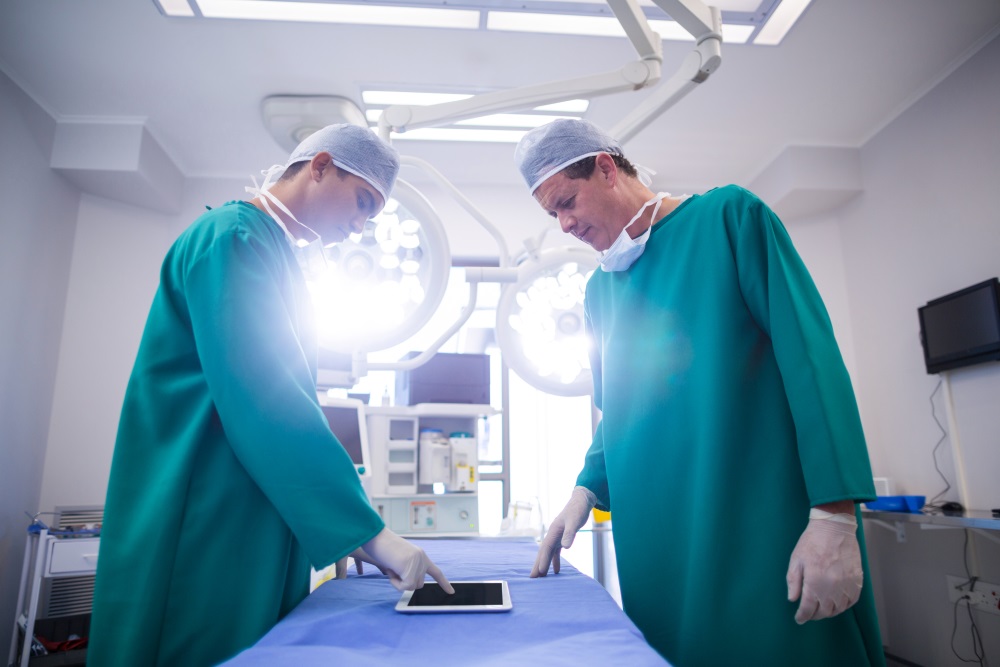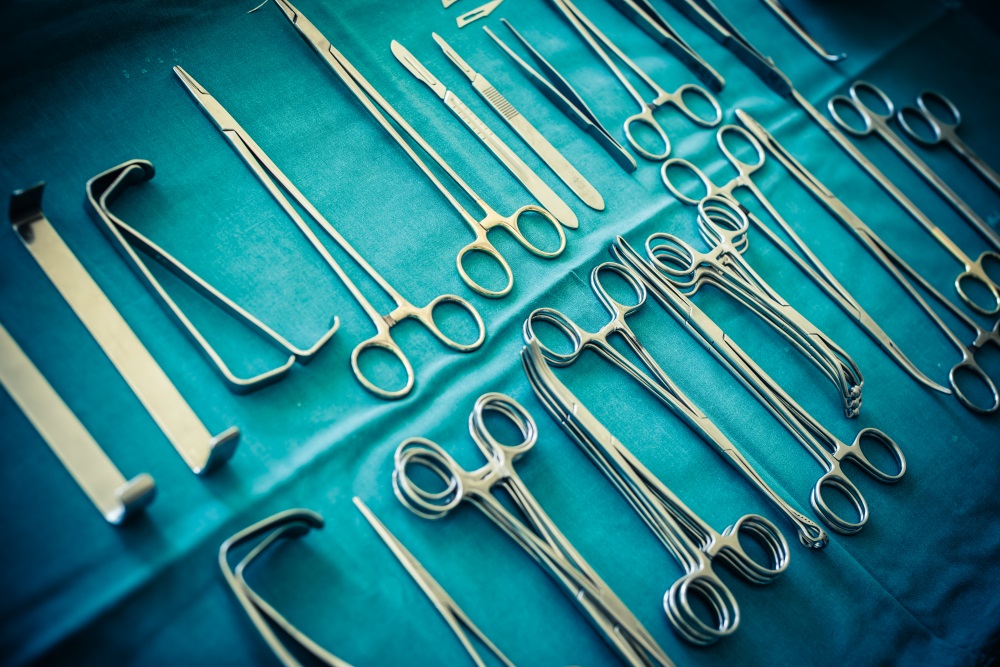At ARinMed, we are always digging through stuff on the web to find out the latest and more interesting advances about Augmented Reality and Medicine. Many efforts made in the Augmented Reality field are focused on improving medical education, enhancing training, and preparing physicians better than what we could 5, 10 or 20 years ago. One of the fields that has embraced Augmented Reality more than any other is surgery, and recently, we discovered a really, really interesting patent that we feel is going to be a great use for AR in the future.

This new and exciting patent is registered under Siemens Medical Solutions USA, Inc., and their researchers have proposed a system that uses Augmented Reality in order to make surgeries a lot more didactic and standardized than ever. How? This new system focuses mainly on the medical instruments as the ‘tools’ and the patient as the ‘target’. The patent claims that the system will be able to ‘beam’ the trajectory of the instrument from the tip through the target and delimit structures that could potentially be injured by the example instrument during surgery. This way the system will provide a ‘virtual guide’ that will allow the surgeons to perform any procedure in a more practical and secure way.

It is understood that this system works under a platform that uses the patient‘s previous radiologic studies in order to become a preoperative planning device that walks the surgeon through the procedure. The new system also possesses an orientation functionality and tracking that will allow to correct any mispositioning of the surgical instrument on the spot. All of this information is going to be portrayed in beautiful 3D models and displayed through Augmented Reality Head Mounted Devices, which will allow the surgeon to see how the instrument could be used and be able to make a decision on the spot, all guided by the system in order to offer the patient the best intervention possible.

Further in the document, it appears that this invention could also be focused in the insertion of ‘needles’ for specific situations – is it possible they are talking about a central line catheter? The specifications of the system would be ideal for this procedure since this procedure carries a lot of risks, some of which are unavoidable, such as local site injuries, phlebitis and catheter malposition, etc. All of these complications seem pretty avoidable with an advanced system like this, and it is a matter of time until we see at a prototype to get a better idea of the use they are giving to this device.

This all seems very sci-fi right? It is unclear in what stage of development this invention is at Siemens, but a system like this would make surgeries a lot easier! The software, with a proper algorithm, could even decide the best approach for each case, defining a new era for proper use of medical guidelines being assisted by computers. This is what medicine is going to be about in the next 5 years or less!
Please let us know your thoughts below!








